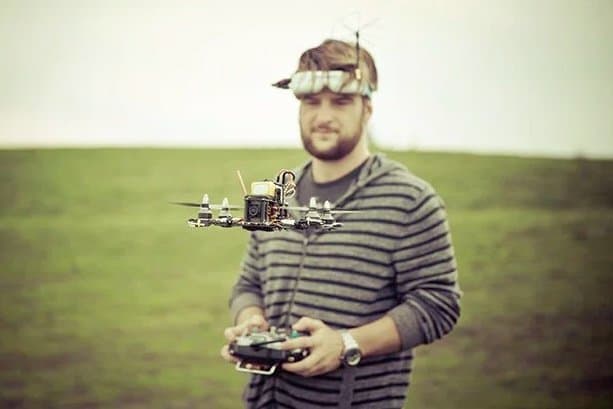As drone use in areas like photography and mapping grows, there’s also a rapidly growing and vibrant community dedicated to extreme FPV racing.
If you’ve been thinking about racing a drone yourself, I’m sure you’ve watched a few videos online or maybe even attended a drone racing event.
And boy do they make it look easy.
Just gliding effortlessly between obstacles and deftly weaving in and out of corners that seem to come up too quickly to maneuver around them.
This is what I mean.
But before you buy a racing drone or make your own, you might want to slow down a bit.
It’s Hard
FPV drone racing is hard, really hard.
It is very different from normal line-of-sight drone flying and requires radically different skills.
What makes it even more challenging is that it’s usually done in tight spaces rather than an open field like normal drone flying.
And even when it’s done outdoors, there are obstacles put in place to make it more challenging.
Properly using the throttle while still turning the drone left and right around obstacles requires more skill and practice than it seems.
It calls for enormous amounts of attention and an almost superhuman ability to anticipate obstacles and react to them while flying at speeds of up to 120mph.
They make it look easy because they have trained and practiced for months. They have probably crushed countless times and owned dozens of racing drones to get that good.
Racing drones is difficult but learnable. Start at your skill level and then practice and gradually get better until you are good enough to compete with the pros.
Tips for Aspiring Drone Racers
1. Start with a simulator
Instead of damaging dozens of drones as you learn to race, start with a simulator. You can crash as much as you want without worrying about replacing parts or buying another drone.
The Drone Racing League has one of the best drone racing simulators. It costs $20. FPV FreeRider also has a pretty good one for $5.
2. Go outside
When you feel ready to fly an actual drone, go to an open field. Before you learn how to evade obstacles and make hard turns, you need to learn basic controls, especially the throttle. This is best done in an open area.
Practice how to maintain different altitudes as you fly. This will come in handy when you have to fly under a ceiling or duck under a gate.
Go up and down and make tight turns until you can confidently control the drone while flying fast.
You’ll probably need several hours of flying in the open before you are ready to go inside or tackle a set of obstacles.
Flying outdoors also lets you get the hang of FPV flying without damaging your drone. Get familiar with all the settings and controls until you can fly just as well as if you were looking at the drone directly.
Remember to only fly in a safe area away from people and buildings.
3. Use obstacles

Once you have the basics of FPV racing down, time to go a level up: flying through obstacles.
You can use your own DIY obstacles like drums or flags. You can also buy hoops and gates online and set them up outdoors. Trees and rocks also work as great obstacles.
Start slow; don’t try to evade the obstacles at expert-level speeds.
Learn how to control throttle and pitch as you go under, over or through obstacles.
Start with a basic obstacle set up where you don’t have to make sharp turns or thread through tight gaps. Then as you get better, make the set up more and more challenging and increase your speed.
4. Go inside
Having a constant height limitation is a great way to become an expert drone racer. You have to be extra careful not to go too high hit the ceiling or drop too low and crash onto the floor.
Find an indoor place that’s safe to fly in. It can be your garage (if it’s big enough) or an abandoned building.
You can start with whichever obstacles are already there, like pillars, or add your own.
If you learn how to fly fast without crushing within a closed space, you are well on your way to becoming a pro racer.
5. Get racing!
Look for nearby drone racing events or leagues and join them. Racing other people sharpens your skills and helps you set better and better lap times.
As you get really good, consider joining even bigger events and leagues to race against the best out there.

